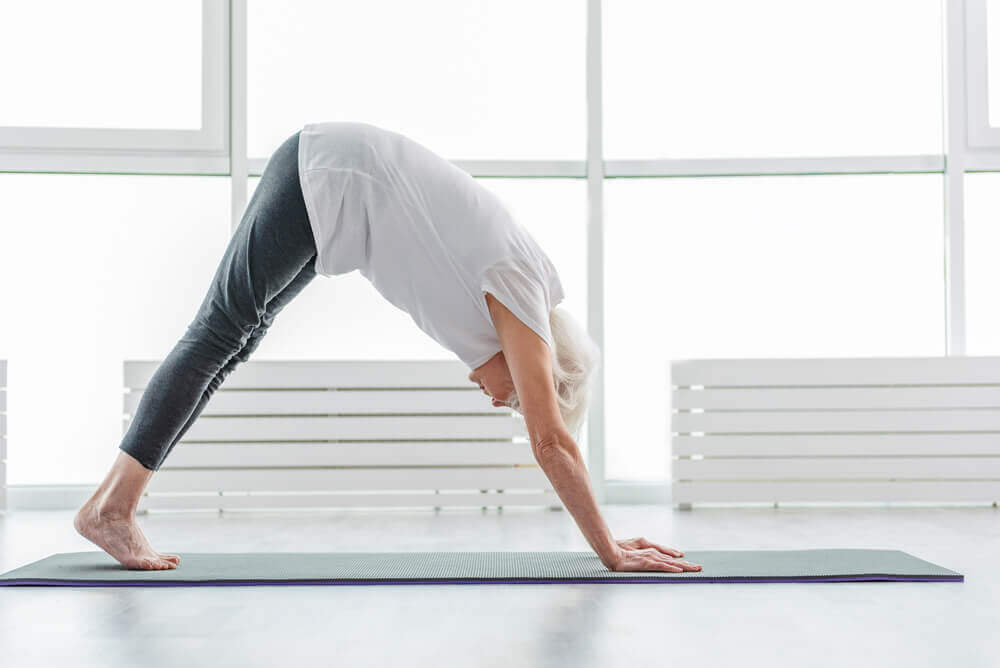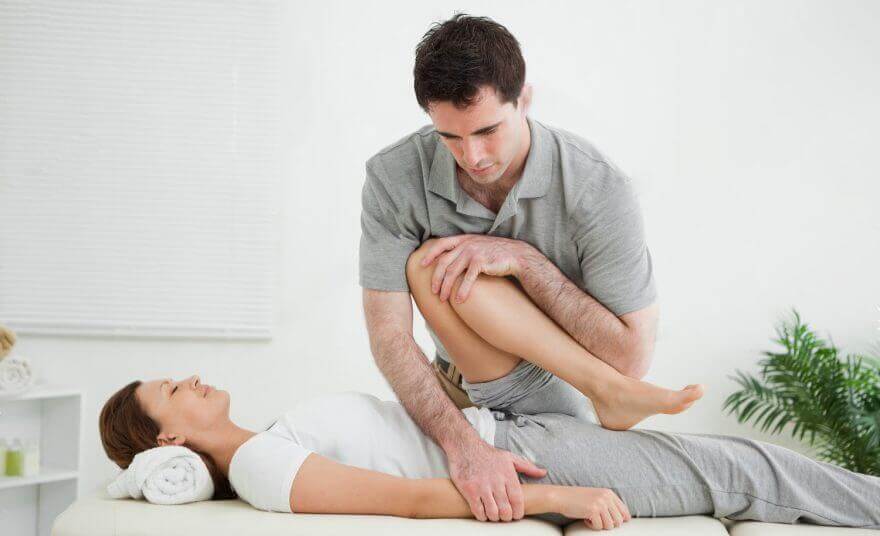Global Postural Reeducation: What Is It and What Are Its Principles?


Written and verified by the doctor Leonardo Biolatto
Often better known by its acronym: RPG, global postural reeducation is a method within kinesiology and physiotherapy. It’s a way of addressing pathologies of the neuro-musculoskeletal system to diagnose and treat the condition.
One of RPG’s main advantages is that it generates changes and habits. These changes can be prolonged in time to improve the patient’s quality of life. Specialists do not suggest RPG only for specific moments of pain, but also for overall lifestyle changes.
In this article, we’ll discuss RPG’s effect on the neuro-musculoskeletal system. Likewise, we’ll also see the principles behind this practice.
What is global postural reeducation?
The French physiotherapist Philippe Souchard devised this method in 1980, and then told the whole world about it. It had great global acceptance, so much so that global postural reeducation associations have been formed in several regions and countries.
Unlike other forms of kinesiology and physiotherapy, RPG seeks the origin of the pathology. It’s not only a palliative practice for the symptoms, but proposes to look for the causes.
The neuro-muscular-skeletal system is formed by the union of the joints, bones, muscles and the innervations of the nervous system.
They’re the ones that direct the movement and the postures in the human body. The disorders that affect it can cause disability.
In order to achieve movement, our body has a complicated network that interacts with and involves diverse systems. In addition, there’s not only dynamic movement, but also static or postural movement.

Physiological principles of the neuro-muscular-skeletal system
Global postural reeducation studies the neuro-muscular-skeletal system and the possibility of it causing disorders based on three principles:
- Individuality: Each body is different, even if they do share similar structures. There’s a body organization that’s specific to each human being. For that reason, the disorders are also unique. Although medical terms often describe illnesses in a general way, each body expresses it in its own way.
- Globality: The body’s systems are related to each other, that is, there are no isolated systems. To function properly, the way tissues interact with each other is fundamental. When there’s a bone disorder, there may be muscular disorders as well. When there are disorders in the nervous system, this can possibly affect the rest of the locomotor system, as with fibromyalgia.
- Causality: Every disorder that happens in our bodies has a cause. Treatments should aim to find the cause. When specialists carry out treatment only on the symptoms and consequences, they’ll reappear in the future.
To learn more: How Your Spinal Column Changes Due to Stress
Principles of global postural reeducation
Based on the principles of the physiology of the neuro-muscular-skeletal system, global postural reeducation proposes three concepts on which it bases its theory and practice.
These basic concepts establish the basis for RPG treatments which specialists and patients describe as progressive and individual. Specialists and patients achieve the objectives of the treatments by working on the interrelationship between static and dynamic muscles.
These are the three principles of RPG:
- Muscles are organized in the form of chains
- There’s compression of the joints by gravity and muscular action
- Breathing is related to the neuro-musculoskeletal system
Muscles are organized in the form of chains
None of the muscles in the human body work in isolation. However, we do have functional muscle chains that are linked in order to achieve a posture or a movement.
Therefore, if one muscle fails in a functional chain, then it affects that whole chain, not just that muscle. In order for the treatment to be successful, it should aim at correcting the entire muscle chain.
In addition, chains can be primarily dynamic or primarily static. Specialists treat each of these functions differently. For some, the problem is rigidity and for others the problem is lack of tone.
There’s compression of the joints by gravity and muscular action
The weight of the body generated by gravity impacts the joints. In addition, the muscles impact on them using them as a support point. Whether it’s to move or to maintain posture, the joints are subject to stress.
Many illnesses originate from joint overload. Often the alignment is lost or the joint spaces are compressed, generating unnatural postures. In the long run, these postures are painful.
Global postural reeducation tries to decompress joints and correct the general posture of the body.
Breathing is related to the neuro-muscular-skeletal system
When there are neuro-muscular-skeletal disorders, it affects breathing. The pain alters it, and bad posture also affects the thoracic cage. On the other hand, stress due to myalgia also changes the breathing rhythm.
For RPG, it’s important to act on the respiratory dynamics. The treatments pay special attention to breathing and the muscular system of the thorax, which intervenes when we inhale and exhale.

You may like to find out about: Four Stretches that Will Help Correct Your Posture
Who can benefit from global postural reeducation?
RPG can treat many different types of disorders. In addition, the age spectrum is broad, as both children and adults can benefit from it. It’s a treatment that doesn’t have any contraindications.
Alterations in posture originating in the spine or limbs can be treated. In this line, Genu Valgo and the Genu Varo are treatable. It’s also indicated for herniated discs and scoliosis.
RPG can treat injuries in athletes. Certain sports can overuse joints, and this can cause disorders which specialists treat with global postural reeducation. For example, golfer’s elbow, tennis elbow or painful shoulders.
Lastly, we can mention neurological pathologies with motor repercussions, such as Parkinson’s disease, or cerebral palsy. In these cases, the aim is to improve the quality of life of a pathology which other disciplines are also treating.
All cited sources were thoroughly reviewed by our team to ensure their quality, reliability, currency, and validity. The bibliography of this article was considered reliable and of academic or scientific accuracy.
- Souchard, Philippe E., and Instituto de Terapias Globales. Reeducación postural global. Instituto de Terapias Globales, 1989.
- Souchard, Philippe E. RPG. Principios de la reeducación postural global. Vol. 88. Editorial Paidotribo, 2005.
- Palacín, Montserrat. “La Reeducación Postural Global (RPG) de Philippe Souchard: Puntos de ruptura con la fisioterapia clásica.” Natura Medicatrix: Revista médica para el estudio y difusión de las medicinas alternativas 45 (1996): 28-33.
- Bienfait, Marcel. La reeducación postural por medio de las terapias manuales. Vol. 87. Editorial Paidotribo, 2005.
- González S, Tello J, Silva P, Lüders C, Butelmann S, Fristch R, et al. Calidad de vida en pacientes con discapacidad motora según factores sociodemográficos y salud mental. Rev Chil Neuropsiquiatr. 2012;
- Gómez-Regueira N, Escobar-Velando G. Tratamiento fisioterapéutico de las alteraciones posturales en la enfermedad de Parkinson. Revisión sistemática. Fisioterapia. 2017.
- Arendt, E. A., Miller, L. E., & Block, J. E. (2014). Early knee osteoarthritis management should first address mechanical joint overload. Orthopedic reviews, 6(1), 5188. https://doi.org/10.4081/or.2014.5188
This text is provided for informational purposes only and does not replace consultation with a professional. If in doubt, consult your specialist.








